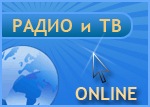Value Adding Activities are any activities that add value to the customer and meet the three criteria for a Value Adding Activity.
The three criteria for a Value Adding Activity are:
- The step transforms the item toward completion
- The step is done right the first time (not a rework step)
- The customer cares (or would pay) for the step to be done
source

source
Microsoft has recently announced an open-source application software source code analysis tool, Application Inspector. Modern software development practices often require building applications from hundreds of existing components, whether they were written by another team in the organization, an external vendor, or someone in the open-source community. Although this will bring many benefits, such as faster development progress, software quality, and interoperability, etc., it will also bring hidden complexity and risks.
In response to this situation, Microsoft introduced that its internally used tool is Application Inspector, which is a software feature source code analyzer. It can identify software source code features by using static analysis and a customizable json-based rule engine to understand the function of the program. (link)
Use cases of Microsoft Application Inspector
- Identifying key changes made in a component’s feature over time to know about a potential a malicious backdoor or increased surface for attack.
- To identify and scrutinize high-risk components and components with unexpected features
Using Microsoft Application Inspector is fairly easy as it is a cross-platform, command-line tool that produces output in multiple formats such as JSON and interactive HTML.
GitHub
Additional links
VSTest.Console.exe should be used from .NET Framework 4.6.1 instead of MSTest.exe to run unit tests from command line.
MSTest.exe brings “No tests to execute” error message.
More info:
Add a Desktop
To add a virtual desktop, open up the new Task View pane by clicking the Task View button (two overlapping rectangles) on the taskbar, or by pressing the Windows Key + Tab. In the Task View pane, click New desktop to add a virtual desktop. If you have two or more desktops already open, the “Add a desktop” button will appear as a gray tile with a plus symbol. You can also quickly add a desktop without entering the Task View pane by using the keyboard shortcut Windows Key + Ctrl + D.
Switch between desktops
To switch between virtual desktops, open the Task View pane and click on the desktop you want to switch to. You can also quickly switch desktops without going into the Task View pane by using the keyboard shortcuts Windows Key + Ctrl + Left Arrow and Windows Key + Ctrl + Right Arrow.
Move windows between desktops
To move a window from one desktop to another, you first have to open up the Task View pane and then hover over the desktop containing the window you want to move. The windows on that desktop will pop up; find the window you want to move, right-click it, and go to Move to and choose the desktop you want to move the window to. Also there is the ability to drag and drop windows — you can grab the window you want to move and drag it into the desired desktop.
Close a desktop
To close a virtual desktop, open up the Task View pane and hover over the desktop you want to close until a small X appears in the upper right corner. Click the X to close the desktop. You can also close desktops without going into the Task View pane by using the keyboard shortcut Windows Key + Ctrl + F4 (this will close the desktop you’re currently on).
source
$ sudo apt update
$ sudo apt upgrade
REG ADD "HKCU\Software\Microsoft\Windows\CurrentVersion\Internet Settings" /v ProxyServer /d "http=proxy-url:port;https=proxy-url:port;ftp=proxy-url:port;socks=proxy-url:port;" /t REG_SZ /f
source
If you’d rather not use Gutenberg, you can use the Classic Editor Plugin (which will still be available after Gutenberg is added to Core).

